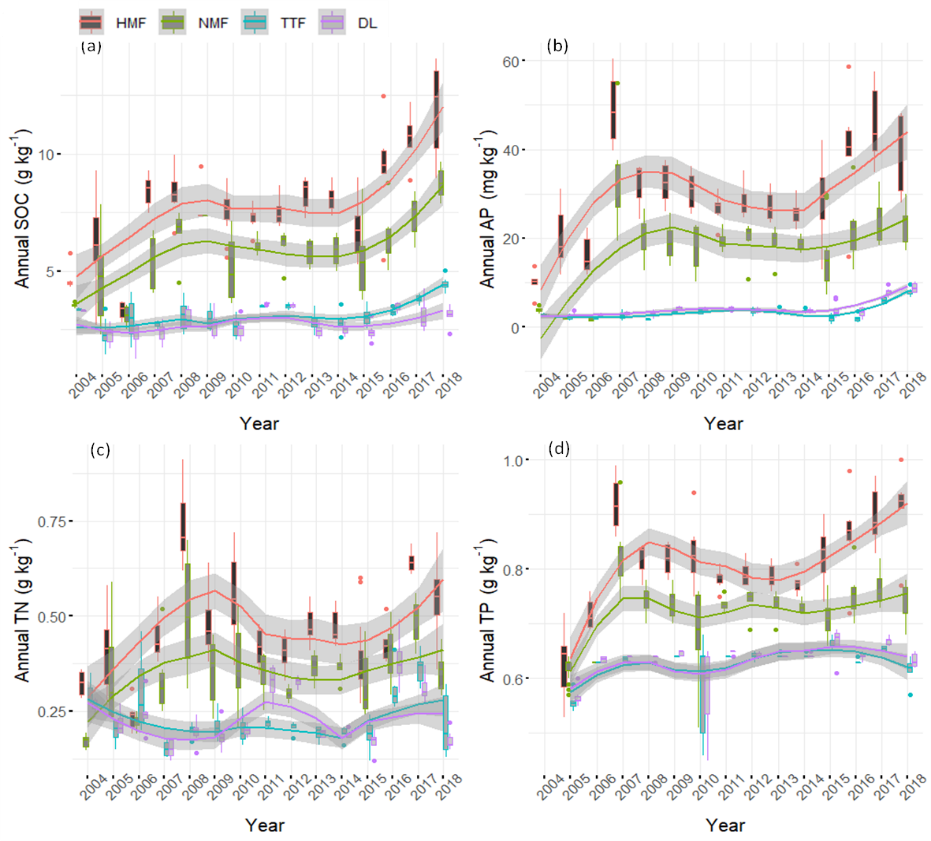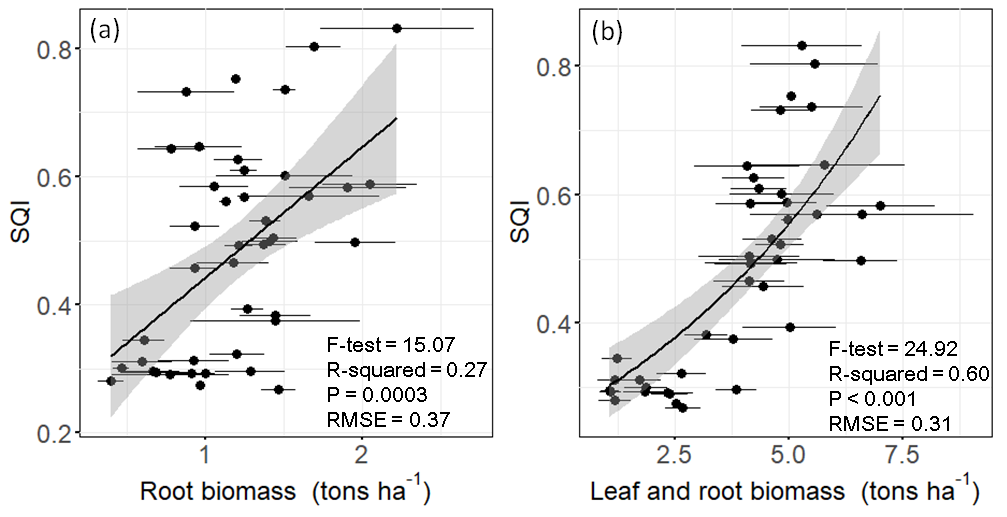Study Reveals the Relationship between Soil Quality and Cotton Yield in Sandy Desertified Land
2021-11-12
Researchers from Xinjiang Institute of Ecology and Geography, Chinese Academy of Sciences, and Lanzhou University had revealed the relationship between soil quality and cotton yield in sandy farmland.


These findings were published in Journal of Environmental Management and Field Crops Research, entitled "High biomass production with abundant leaf litterfall is critical to ameliorating soil quality and productivity in reclaimed sandy desertification land” and “Inter-annual variations of seed cotton yield in relation to soil organic carbon and harvest index in reclaimed desertifed land."
Soil quality improvement as well as its eco-economic benefits increasement based on the proper land management patterns is a fundamental prerequisite to achieve the coordinated development of environment protection and social-economic. However, key scientific issues such as the rules of soil quality evolution and its mechanisms during the reclamation of sandy soils are not clear. In particular, there is also a lack of trial data support on whether traditional ecological hypotheses can be applied to such aspects as desert land governance and utilization.
In this study, researchers conducted a long-term location test for reclamation of sandy desertification land from 2004 to monitor annually the physical indicators such as surface and deep soil moisture and nutrients, mechanical composition and aggregates, above and below-ground biomass of cotton indicators such as labor input and yield economy benefit of chemical fertilizers.
The results showed that: 1) Higher leaf nitrogen content and photosynthetic capacity of leaves at the seedling stage were able to promote higher canopy leaf area, which was beneficial for higher aboveground biomass; 2) The inter annual variation in seed cotton yield was significantly and positively correlated with above ground biomass, harvest index and number of cotton bolls per area, with relative importance ordered as above ground biomass ≈ harvest index > number of cotton bolls per area; 3) Above ground biomass showed a linear increase saturation curve relationship with soil mass index (SQI) at a SQI saturation value (threshold) of 0.5, corresponding to soil organic C content of ~ 5.0 g kg-1; 4) The test results support the HBCS (high biomass cropping system) ecological hypothesis and are validated for the first time for sandy desert land restoration, i.e. the continuous high addition of exogenous carbon during the reclamation of sandy desertification land is able to significantly enhance soil quality and promote crop stability and high yields; 5) In response to sandy desertification land of the Cele oasis, application of 200 kg N, 60 kg P2O5 and 21 ton agronomic fertilizers per ha is recommended, which can guarantee high and stable crop yield.
Article link: https://doi.org/10.1016/j.jenvman.2020.110373
Article link: https://doi.org/10.1016/j.fcr.2021.108267

Fig. 1 Comparisons annual trends of soil organic carbon (SOC) and soil available P in agricultural fields with different farming types. (HMF: farmland with high manure input; NMF: farmland with normal manure input; TTF: temporary tillage farmland; DL: desertification land)

Fig. 2 Relationships between SQI and root biomass (a), leaf and root biomass (b)
Contact: LIU Jie, Xinjiang Institute of Ecology and Geography
E-mail: liujie@ms.xjb.ac.cn



